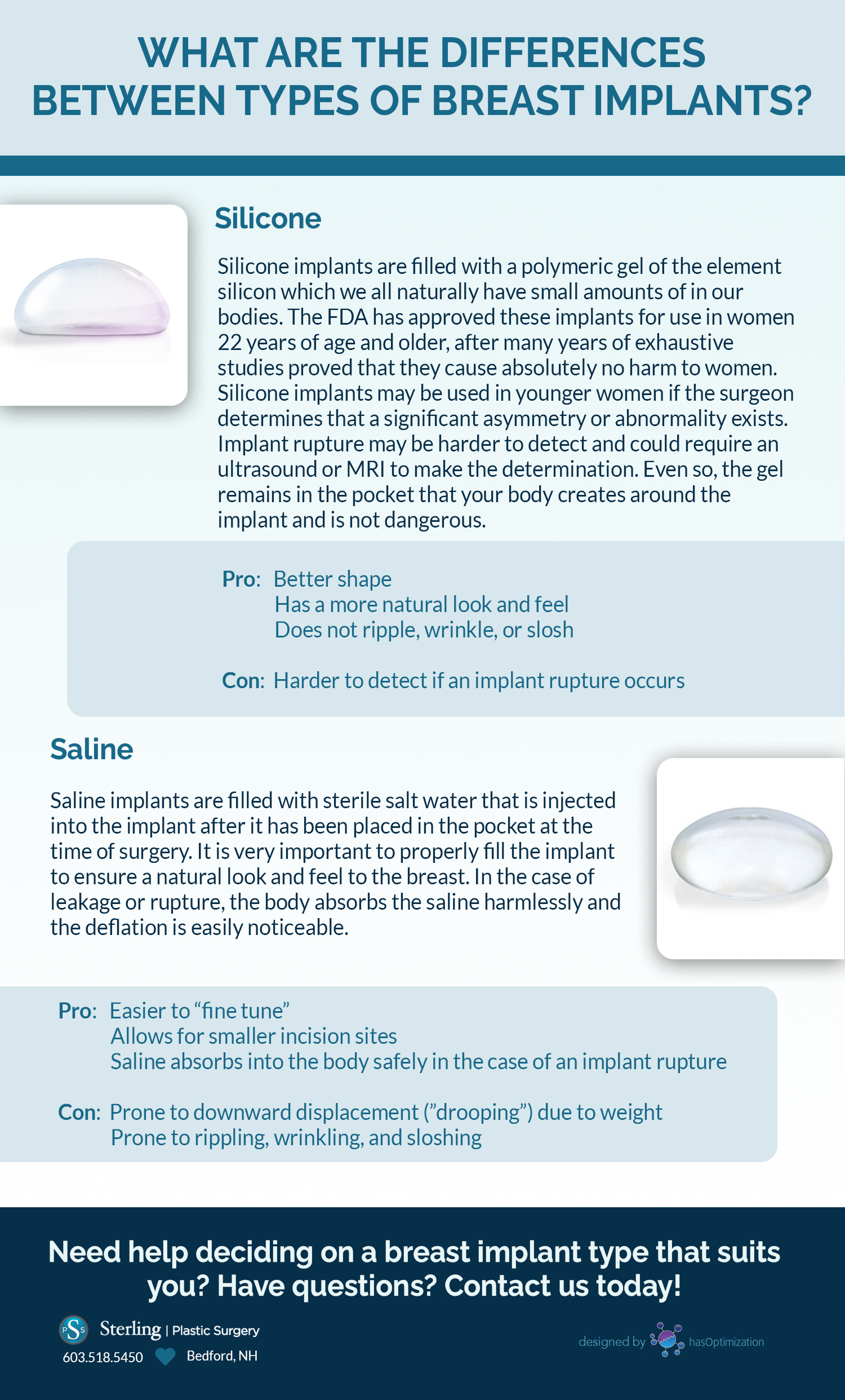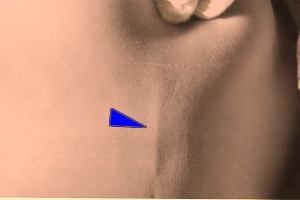
If breast augmentation is on your holiday wish list, you might be wondering which type of breast implant is best — silicone or saline? As with most cosmetic procedures, there isn’t a single answer to this question. Often, the best option is dependent on each patient. Even so, there are some important distinctions to know between the two, which might help you decide which type of implant you prefer.
Check out our helpful guide and graphic to learn the difference between silicone and saline breast implants.
Silicone: Safe, Yet Possibly Sneaky?
What in the world does this mean? Simply put, FDA approved silicone implants are safe for women over the age of 22, following extensive research. Some plastic surgeons opt for silicone implants for patients who exhibit significant abnormalities or noticeable asymmetry because silicone implants tend to offer a better, more natural shape, look, and feel compared to saline implants.
Given that silicon is a naturally occurring element in the human body — granted, in far lesser amounts than found in silicone implants — there is little need to worry about a ruptured implant.
So … What’s sneaky about silicone implants?
Any possible silicone implant rupture might be harder to confirm without the use of MRI or ultrasound. However, in the event of a rupture, the implanted gel will remain contained and will not cause harm to the body.
In Support of Saline Implants … that Stay Up!
The process of placing saline implants is different compared to silicone implants in that sterile salt water (saline) is injected into the implant after it’s been inserted into the breast. This results in smaller incision sites compared to silicone implants. Once inserted, your plastic surgeon will fill the implant with saline with a goal of creating the most natural feel and shape, a process that is easier to finesse from start to finish.
In the unlikely event of a rupture, the leaked saline will absorb into your body and is harmless. Unlike silicone implants, the rupture will be noticeable and therefore not require MRI imaging to detect or confirm.
Unfortunately, the weight of saline implants can result in drooping, also called displacement. Other issues might include sloshing, or the appearance of ripples or wrinkles.
Ultimately, the pros and cons of each type of breast implant are best discussed with your doctor.
Schedule your consultation for breast augmentation when you’re ready to discuss which type of breast implant is best for you with Dr. Sterling. Simply call our office at 603-518-5856 or email us at [email protected].



0 Comments